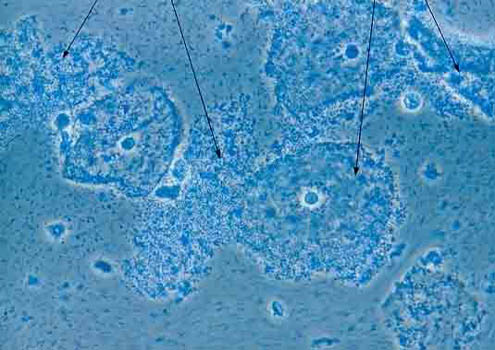
THE most common cause of pathological vaginal discharge. It can be caused by an overgrowth of many types of bacteria, usually anaerobes. There is also often a decrease in the number of lactobacilli. It is not sexually transmitted.
Epidemiology
- Affects 10% of women in the UK, but most cases are asymptomaticPresentation
- A smelly (fishy) discharge, usually white / gray in colour. This idscharge is made up of waste products produced by the colonising anaerobes.- Vaginal itch (not in all cases)
- Not usually inflamed
Investigations
- Whiff test (yes, really!) – potassium hydroxide (KOH) is added to a sample of the vaginal discharge. If a strong fishy odour is produced – the test is positive for bacterial vaginosis- pH - >4.5
- Triple swabs (chlamydia, gonorrhoea, and a ‘general’ swab for culture)
o Microscopy – reduced levels of lactobacilli, and increased levels of other bacterial agents, leukocytes absent, presence of clue cells
o Culture – to define the predominant causatory agent
Differentials
Trichomoniasis is the only other likely cause of an offensive discharge, but this is usually yellow, and on microsocpy shows the prescence of protozoa with flagellaRisks
- Increased risk of pre-term labour
- Intra-amniotic infection
- Increased susceptibility to HIV
- Post-termination sepsis
Treatment
- Metronidazole PO – one-off dose – 2g- Clindamycin – 2% cream – apply once at night to the vagina for 7 days
o If recurrent problems, then treating the partner may resolve the situation
Written by: Tom Leach
1 comments:
Write commentssehr guter Kommentar
ReplyEmoticonEmoticon